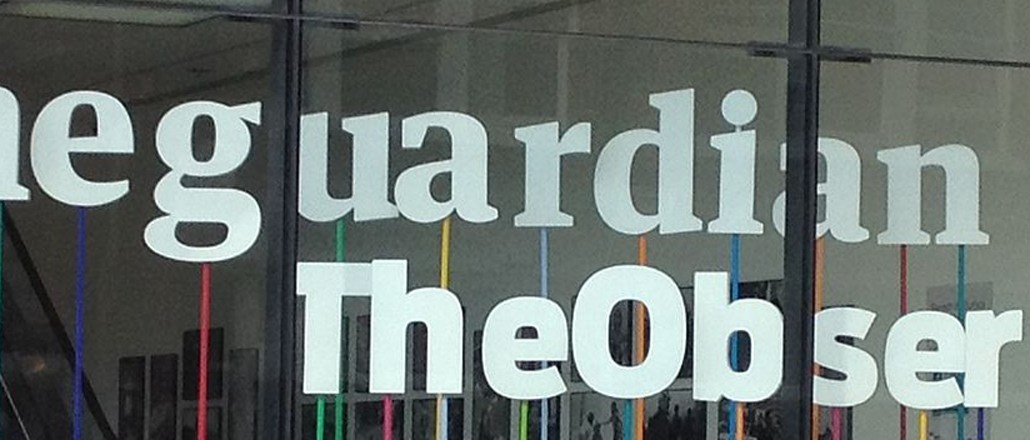
While most publishers’ content studios are writing articles and filming videos for brands, The Guardian’s branded content studio spent much of 2014 making apps with them.
Working with life insurance company Beagle Street, for example, Guardian Labs created “Happy for Life,” an app that offers users small ways to improve their lives. More ambitious was “Guardian Witness,” a citizen journalism app that let users help The Guardian report big stories. Guardian readers responded. Guardian Witness has been downloaded over 48,000 times and attracted 45,000 user contributions since last April.
“These are the types of things we wouldn’t have been able to do without these brands coming on board and becoming funding partners,” said Guardian Labs managing director Anna Watkins, formerly managing director at Initiative. She described Guardian Witness as a Holy Grail of sponsored content because it won both a Press Gazette award and awards from marketing organizations.
The 130-person creative team, which was restructured last February, has attracted a portfolio of 100 new clients over the last year, including Unilever and Cisco. But while The Guardian is letting brands sponsor its content, it’s not giving them much control over how the content turns out. Even an early partner such Unilever wasn’t able to get a sneak peek at or sign off on Guardian journalists’ work before it was published. That’s a hard sell for some brands, which expect to to be able to shape sponsored content, or even include product mentions. “We’ve lost business to other publishers who will do that,” Watkins said.
On other other end of the continuum is Guardian Lab’s “brought to you by”, content, which is created more closely with brands and doesn’t include Guardian reporters in its creation. For a campaign with insurance company Direct Line, Guardian Labs created a series of how-to’s that included “how to perfect a roast”, “how to fix a stuck pixel on your LCD screen, and “how to fix a broken zip.”
While working with publishers so closely is still uncharted territory for many brands, The Guardian’s status makes an easier sell. “If this was a publisher that didn’t have the credentials or trust that the Guardian had, it might be harder,” said Charlotte Tice, head of publishing at Mindshare. “But there is that element of trust that is there already.”
But trust and integrity are a double-edged sword for The Guardian’s bottom line. While The Guardian’s principled stance has helped it earn respect and credence among its readership, it also fundamentally limits the commercial potential of an initiative such as Guardian Labs. Watkins said that Guardian Labs meets with editorial staffers weekly to weed out potential sponsors that aren’t a proper fit. It’s also picky about the brands it creates content for directly.
“We have to be incredibly sensitive to what our readers and core editorial team think,” she said. “If it’s sponsored, ultimately it’s up to our editorial to say ‘yes’ or ‘no.’”
That’s an increasingly tough stance to take for many. While publishers have long blacklisted brands in certain industries such as tobacco and oil, the shrinking pool of display revenue is making many of them less picky about who they work with. Recall the infamous Atlantic Scientology article, or even the controversial campaign now-defunct GigaOM ran for the NSA.
“All papers are selling their journalistic integrity and process, but you can’t always actually sell that. The moment someone gives you money for it, it ceases to exist,” said Angus Wood, head of research and development at iProspect.
The stakes are high for The Guardian as well. While Guardian Media Group is flush with cash thanks to the sale of its stake in Trader Media Group, it has faced significant losses in recent years as its print revenue dries up and as it builds its digital operations. The organization expects to report losses of 30 million pounds ($45.2 million) for 2014.
But while the The Guardian’s losses are mounting, it’s not turning away from its long-term strategy. “We’re the most trusted news brand in the U.K., and we cannot afford to undermine that,” Watkins said. “The short-term gain that a lot of people play isn’t right for us.”
More in Media

‘The net is tightening’ on AI scraping: Annotated Q&A with Financial Times’ head of global public policy and platform strategy
Matt Rogerson, FT’s director of global public policy and platform strategy, believes 2026 will bring a kind of reset as big tech companies alter their stance on AI licensing to avoid future legal risk.

Future starts to sharpen its AI search visibility playbook
Future is boosting AI search citations and mentions with a tool called Future Optic, and offering the product to branded content clients.

Digiday’s extensive guide to what’s in and out for creators in 2026
With AI-generated content flooding social media platforms, embracing the messiness and imperfection of being human will help creators stand out in the spreading sea of slapdash slop.






